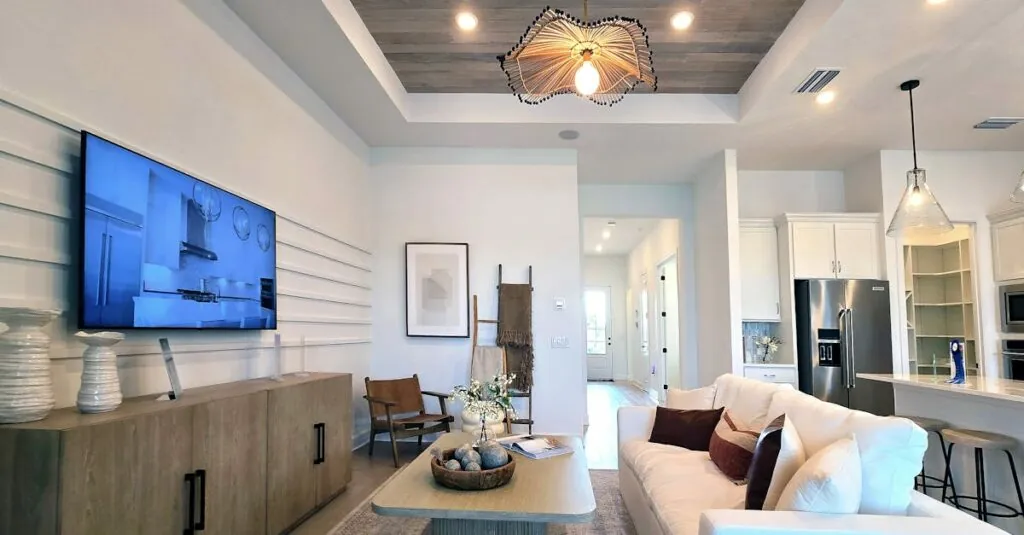As the saying goes, “the kitchen is the heart of the home,” but for seniors, it can sometimes feel more like a minefield. Navigating tight spaces and reaching for those pesky top shelves can turn even the simplest meal prep into an Olympic event. Senior-friendly kitchen design isn’t just about aesthetics; it’s about creating a safe and functional space where culinary magic (or at least a decent cup of coffee) can happen without risking a trip to the ER.
Table of Contents
ToggleImportance Of Senior-Friendly Kitchen Design
Senior-friendly kitchen design plays a crucial role in promoting safety and ease of use. Ergonomic considerations reduce strain, making cooking more enjoyable. When designing kitchens for seniors, various features enhance accessibility and functionality. Open layouts allow easy movement, while anti-slip flooring minimizes fall risks.
Incorporating adjustable shelving helps seniors reach needed items without difficulty. Proper lighting illuminates work areas, reducing the chance of accidents. Color contrast between surfaces aids visibility, assisting those with diminished eyesight. Each element contributes to creating a supportive cooking environment.
Safety features, such as rounded countertop edges, protect against injuries. Appliances designed with larger controls simplify usage. Installing pull-out cabinets supports easier retrieval of pots and pans. All these improvements foster independence, allowing seniors to prepare meals without assistance.
Research indicates that a well-designed kitchen can significantly boost a senior’s confidence in their cooking abilities. Engaging in meal preparation remains an important activity, contributing to overall well-being. Accessible kitchen designs thus enhance quality of life for seniors, allowing them to maintain their culinary interests.
Key Features To Consider
Prioritizing accessibility, safety innovations, and ergonomic design enhances senior-friendly kitchen functionality. Each feature creates a welcoming and efficient cooking environment for older adults.
Accessibility
Accessibility remains vital in kitchen design for seniors. Installing lower countertops accommodates individuals who may have difficulty reaching or standing for long periods. Adjustable shelving provides convenient access to kitchen essentials, reducing hazards associated with climbing. Wider pathways ensure ample space for mobility devices, facilitating ease of movement. User-friendly appliances, including those with larger buttons, streamline daily tasks, allowing seniors to maintain independence.
Safety Innovations
Safety innovations play a crucial role in a senior-friendly kitchen. Anti-slip flooring significantly minimizes the risk of falls, a common concern for older adults. Rounded edges on countertops prevent injuries during accidental bumps. Proper lighting eliminates shadows that can obscure potential hazards, enhancing visibility. Incorporating voice-activated technology enables hands-free operation of appliances, offering additional safety while cooking. Clearly marked controls on ovens and stoves further simplify usage.
Ergonomic Design
Ergonomic design focuses on reducing strain and enhancing usability in the kitchen. Incorporating pull-out shelves simplifies access to pots and pans, minimizing the need for bending or stretching. Lever-style faucets facilitate easy control, even for those with limited hand strength. Selecting lightweight materials for cookware allows seniors to handle items without excessive effort. Overall, these elements create an inviting cooking space that promotes confidence and enjoyment in meal preparation.
Layout Ideas For Senior-Friendly Kitchens
Designing kitchens for seniors emphasizes comfort and functionality. Prioritizing open layouts and optimized work zones enhances accessibility and safety.
Open Concept Spaces
Open concept spaces allow for seamless movement throughout the kitchen. These layouts eliminate barriers, enabling easier access to cooking and preparation areas. Wider entrances and unobstructed pathways accommodate mobility aids, promoting independence. Natural light enhances visibility and contributes to a welcoming atmosphere. Incorporating an island can serve multiple purposes, such as additional counter space or a gathering spot for family and friends. Creating defined zones within an open space facilitates organization while minimizing clutter, helping seniors navigate efficiently.
Optimized Work Zones
Optimized work zones focus on efficiency and ease of use. Designate specific areas for cooking, prep, and cleaning, streamlining activities. Position frequently used items within easy reach to reduce strain associated with bending or stretching. Adequate counter height accommodates seniors who may use a stool or wheelchair. Utilize pull-out shelves and drawers for convenient access, enhancing storage capabilities. Strategic lighting illuminates work zones, improving visibility and safety during meal preparation. By prioritizing these elements, kitchens become functional spaces where seniors can easily enjoy cooking.
Choosing The Right Materials
Selecting appropriate materials enhances both safety and functionality in a senior-friendly kitchen. Careful consideration of flooring and countertop heights plays a crucial role in creating an accessible cooking environment.
Flooring Options
Anti-slip flooring remains essential in reducing fall risks, especially in a kitchen setting. Vinyl, laminate, and cork provide durable yet comfortable surfaces that are easy to clean. Each option offers a soft underfoot feel, which benefits seniors who may stand for extended periods while cooking. Consider using textured materials to improve grip, allowing for safer movement. Additionally, a seamless transition between floor areas minimizes tripping hazards, promoting confidence during meal preparation.
Countertop Heights
Adjustable countertops cater to diverse ergonomic needs, allowing seniors to engage comfortably with kitchen tasks. Heights should align with a standing or seated position, facilitating ease of use while cooking or preparing food. Countertops around 34 to 36 inches high accommodate most wheelchair users, ensuring accessibility. Opting for a combination of heights can provide options for different activities, such as food prep and cooking. Rounded edges increase safety, reducing the risks of injury during movement in the kitchen space.
Conclusion
Creating a senior-friendly kitchen is essential for promoting independence and enhancing the cooking experience. By focusing on accessibility and safety features, seniors can navigate their kitchens with confidence. Thoughtful design choices like open layouts and ergonomic elements make meal preparation enjoyable and stress-free.
Selecting appropriate materials further contributes to a safe environment, reducing fall risks and ensuring comfort. As families consider kitchen renovations, prioritizing these aspects can significantly improve seniors’ quality of life. A well-designed kitchen not only fosters culinary creativity but also supports overall well-being, allowing seniors to continue enjoying their passion for cooking.








